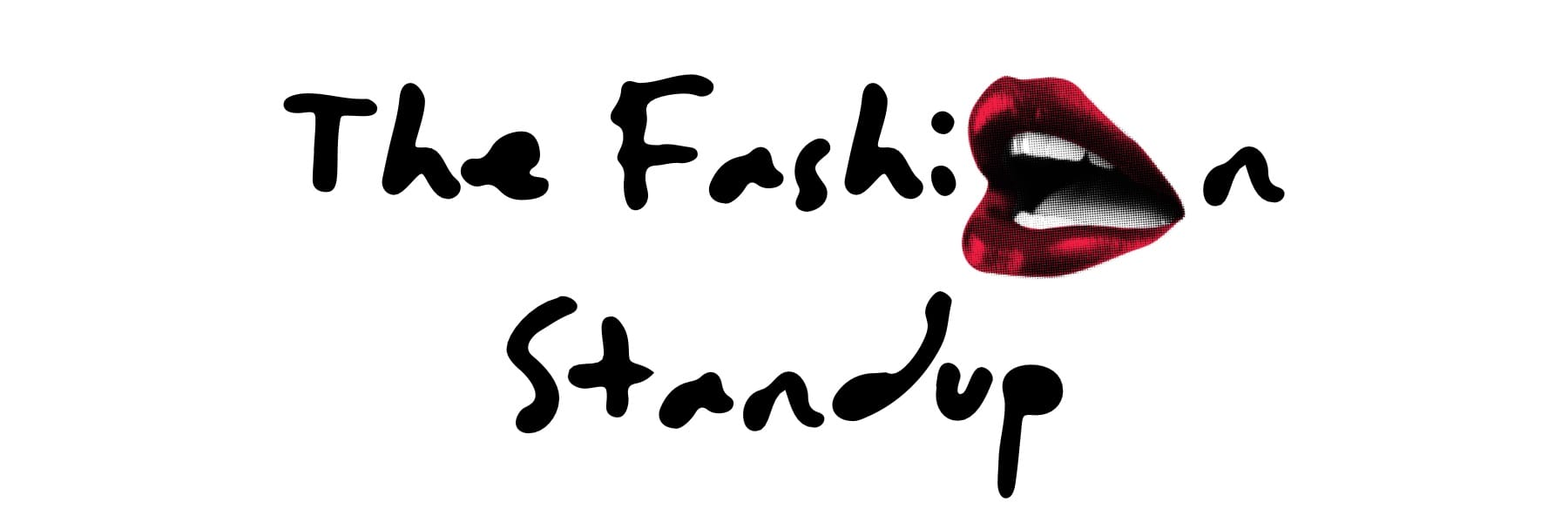ModaLisboa Singular | Lisboa Fashion Week - Day 1 & Day 2
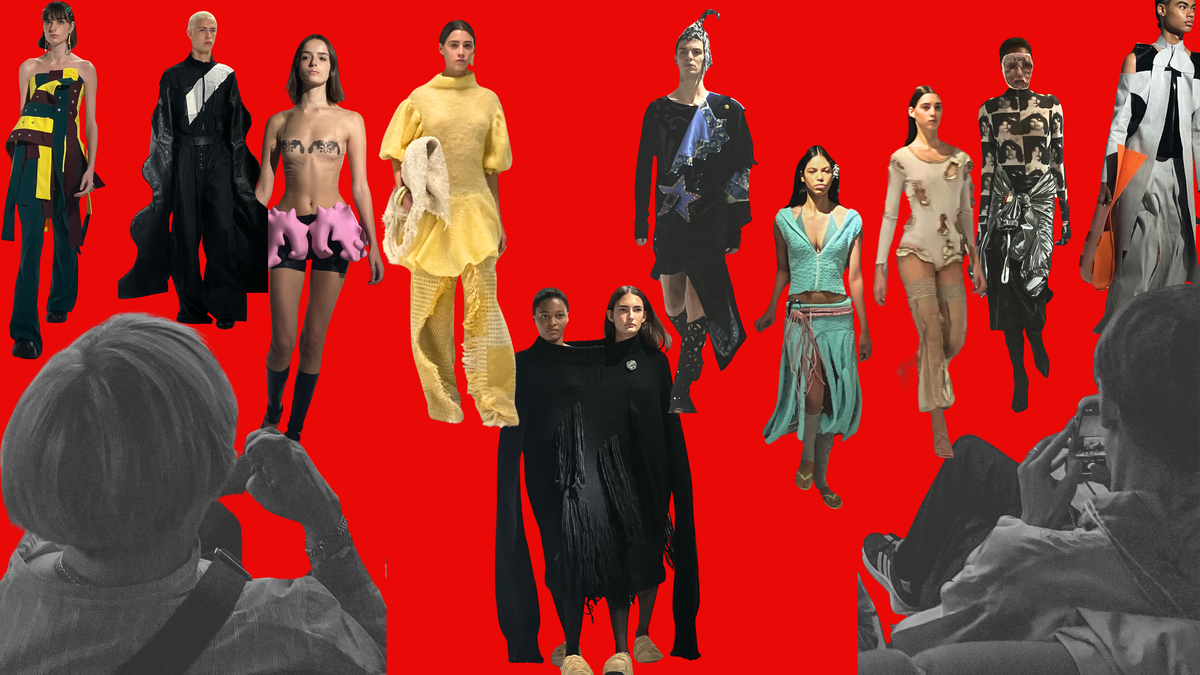
I rehearsed a lot in my thoughts how I would write this article. Maybe still due to the academic chip that I'm trying to control... But let's not waste any more time on that. If I no longer need to control myself emotionally about what I write, I've made a decision — I'm going to write a letter, or two, about ModaLisboa Singular | Lisboa Fashion Week, to a girl friend. I use feminine on purpose, I want to give it a bit of the intimacy I have with my girl friends. So here we go:
Hello___,
How are you?
Yes, you got it right, I'm still on ModaLisboa's frequency. And since I'm much more into written letter-type messages than voice messages rivaling podcasts. And yes, whether you like it or not I will tell you everything.
You know that MUDE (portuguese design museum) has reopened, right? That's when the Singular edition began — through the Fast Talks, the combination of place and event brought me great memories. I could tell you everything exactly as it happened, with a neutral lens. But what would be the point? For that you could watch the video, right?
The Fast Talks began with the opening of the event with a speech by Eduarda Abbondanza who highlighted the experience of the city that this edition invites with free entry events in various locations in Lisbon. Don't worry, if you keep reading you'll find out which events I went to.
The two panels were very different, but very interesting, together they were a breath of hope and a safe space of freedom, in such a troubled world and in a country that seems to be closing in on itself. First, they talked about technology — “Singular Tech for a Plural Future” with Antonio D’Addio (IED — Istituto Europeo di Design), José Sobral (Paatiff), Tupac Martir (Satore Studio) and moderated by Rui Maria Pêgo. I really like Rui Maria's moderation, he is careful in his interventions, allowing for greater dialogue and sharing of ideas.
In the Fashion design process, we start a project with hundreds of quick sketches, ideas are eliminated and others are improved, until the final result and, for me, Fashion writing has great similarities in procedural terms.
Even though the differences in visual terms and the physical component of what is created are the ones that I find most difficult to overcome... The black and white of word processors... While on the one hand it is incredible to need, as a tool, little more than a computer... A screen shot or handwritten notes will never have the aesthetic pleasure of an image than a fabric with pinned patterns waiting to be cut or a sketch of an abstract face but imposing sleeves. Perhaps this is the definition of a fashion designer who writes about fashion.
But that's not what I want to explain to you, I want to give you my vision. What did I focus on in the first panel? I have to be honest — the ideas shared by Tupac Martir.
This is not to say that it was not enlightening to learn about José Sobral's experience regarding his professional transition from Architecture to Fashion - through the fusion of art and Fashion in the digital world. With curiosity and the desire to explore in order to create as his main tools.

Antonio D’Addio, professor of 3D design, did not hesitate to say that three-dimensional design appeals to everyone. Being a sustainable integration in the work of Fashion designers, thanks to the saving of resources that digital prototyping makes possible, there is a component that is more valued than sustainability - money. CEOs are the biggest fans of using 3D design to test a design aka Fashion product, imagine the amount of time that could be saved on toilles.
Martir gives us both sides of the coin in many ways. Technology gives us countless opportunities to expand our creativity, but to unlock it and get started, paper and pencil will always win over mechanical clicks.
He also emphasizes that although we are currently very concerned about artificial intelligence, it already existed in various formats on the World Wide Web. Because what we must be aware of is the fact that AI data is running out, as we are unable to feed it with new information at a similar rate to that at which we consume it.
Do you want to know what impressed me most about what I said? What distinguishes us in creative areas is not what we do well and our successes, but rather our mistakes.
The second panel discussed a lot of things - but mainly the essence of Design and Portuguese Design.
Inês Cottinelli, from the Daciano da Costa studio, who is dedicated not only to promoting her father's work and legacy, but also inherently, Portuguese Design. Defending that Design has a function in its genesis.
Cottinelli goes further to argue that this function does not need to be purely practical. Counterpoint Joana Astolfi, when Astolfi mentions that his windows for Hermès were not exactly design, they had no practical function. They were intended to make people.
The responsible for the Daciano da Costa studio sees this as her role. And, I couldn't agree more. For me, this newsletter is a Fashion design project - even though its function is not to dress the body, it has the function of being a space to promote Portuguese Fashion and to study Fashion in a comprehensive way from a Portuguese environment. Or even from Lisbon, being a countercurrent to the one from London, Parisian or New York, that are the norm.
I already know what you’re thinking: “Okay, Vera. I already understand the idea, but I still don’t know what the highlights of what Bárbara Coutinho said were for you.” And that's exactly where we're headed.
Here I highlight three moments. The phrase: “Since the beginning of time, Man has needed bread as much as he needs poetry.”
The idea that we need globality and multiculturalism to create and be creative, in the same way that design must serve people.
Without forgetting the story about the MUDE director’s Art History teacher. Bárbara Coutinho says that her teacher said that students believe that History was an exact Science, when, in fact, it is a literary genre.
Let’s go downton to enter MUDE again to watch the first part of the Sangue competition on this second day of ModaLisboa Singular?
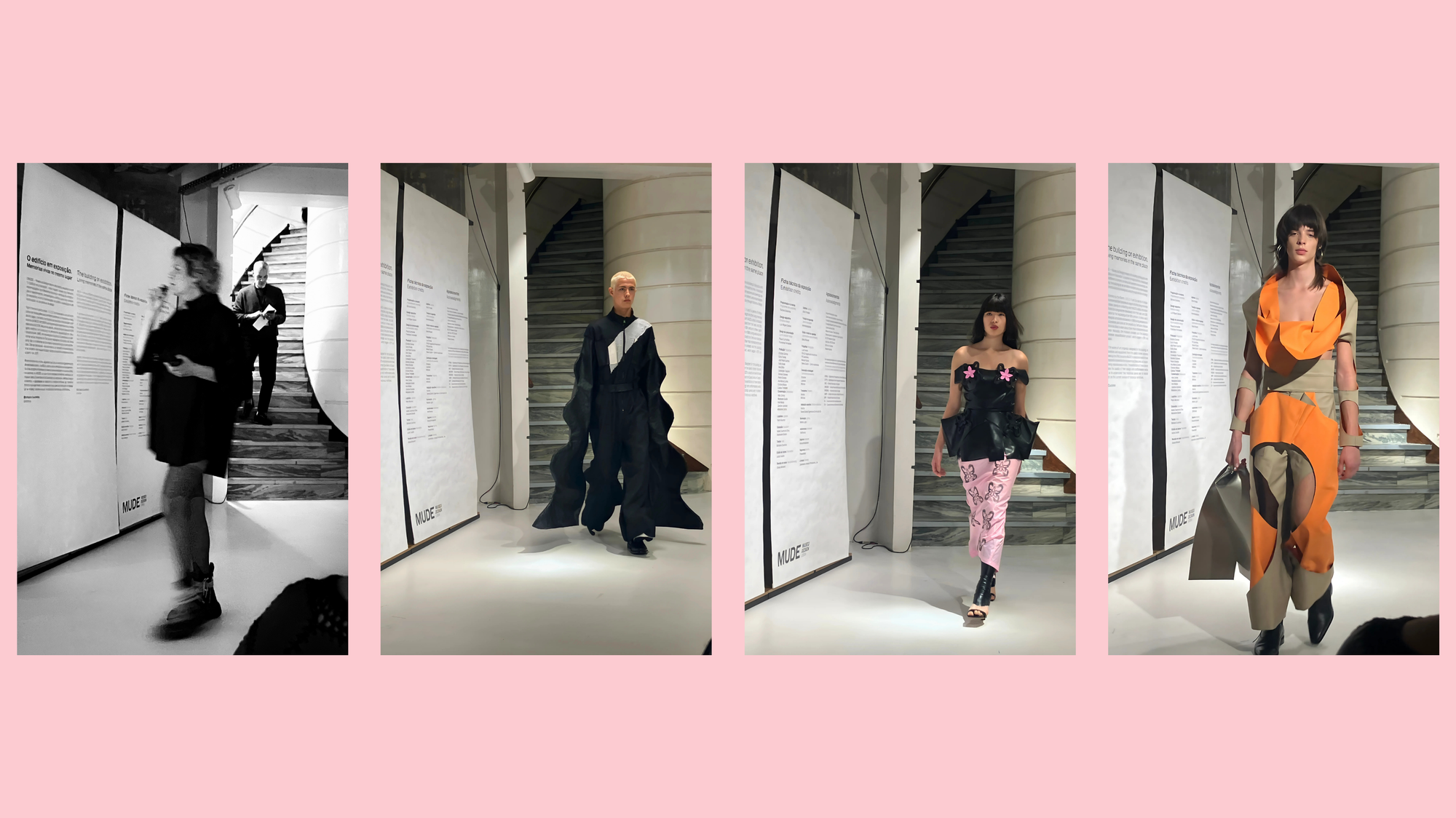
Yes, I met more of my people again, and between the quick kisses and waves, there was also just some observation on my part, typical of someone who returns home and likes to see how everyone is doing.
Now comes the big dilemma, do I tell you about all ten competitors or just a few? To resolve this issue, I would never send this to you again, Christmas was coming and the letter was lost to the detriment of the festive card. I just promise I'll try not to go on too long, okay?
Here we go, I'm going to share with you opinions and perspectives and also “highlights” of what I learned from the designers' concept/descriptive memories and you can read them all, cover to cover on the ModaLisboa website.
The young finalists are an example of what best characterizes Generation Z and its approach to Fashion. They explore traditional and artisanal know-how by applying and exploring new ways of creating new materials - such as salt crystals, created in super-saturated solutions. For all this, it is necessary to "Slow down" (Vagar)- and Francisca Nabinho embraced this questioning of the "pace of current life", presenting us with a surface of explosion of pastel colors and beautiful jellyfish that transmit us tranquility and enthusiasm.
Other forms of sustainability were explored by Dri Martins, through 3D design and laser cutting. When I saw the collection, I was attracted by the shape and chromatic contrasts with the dichotomy, in which we all live between lightness and structure. But seeing the harmony that the designer intends to be her “Tal Ingenuidade”(“Such Ingenuity”), a dialogue between nature and industrialization. Resulting in an effective minimization of waste, which is to be commended.
With the use of already more “established” sustainable materials such as Piñatex, as happened in “Tiangou” by Duarte Jorge, a game of shapes and modeling silhouettes eliminates curvilinear shapes and extra oversized scales. In black and white he explored the concept that gives the collection its name - “Tiangou” is an artistic expression of the legendary Chinese entity of the same name that, according to tradition, can devour the moon, causing an intriguing lunar eclipse.”
In addition to sustainability, technology and traditional know-how, the new generation also wants to question and curiously explore history in dialogue with the present, as well as share their own experiences.
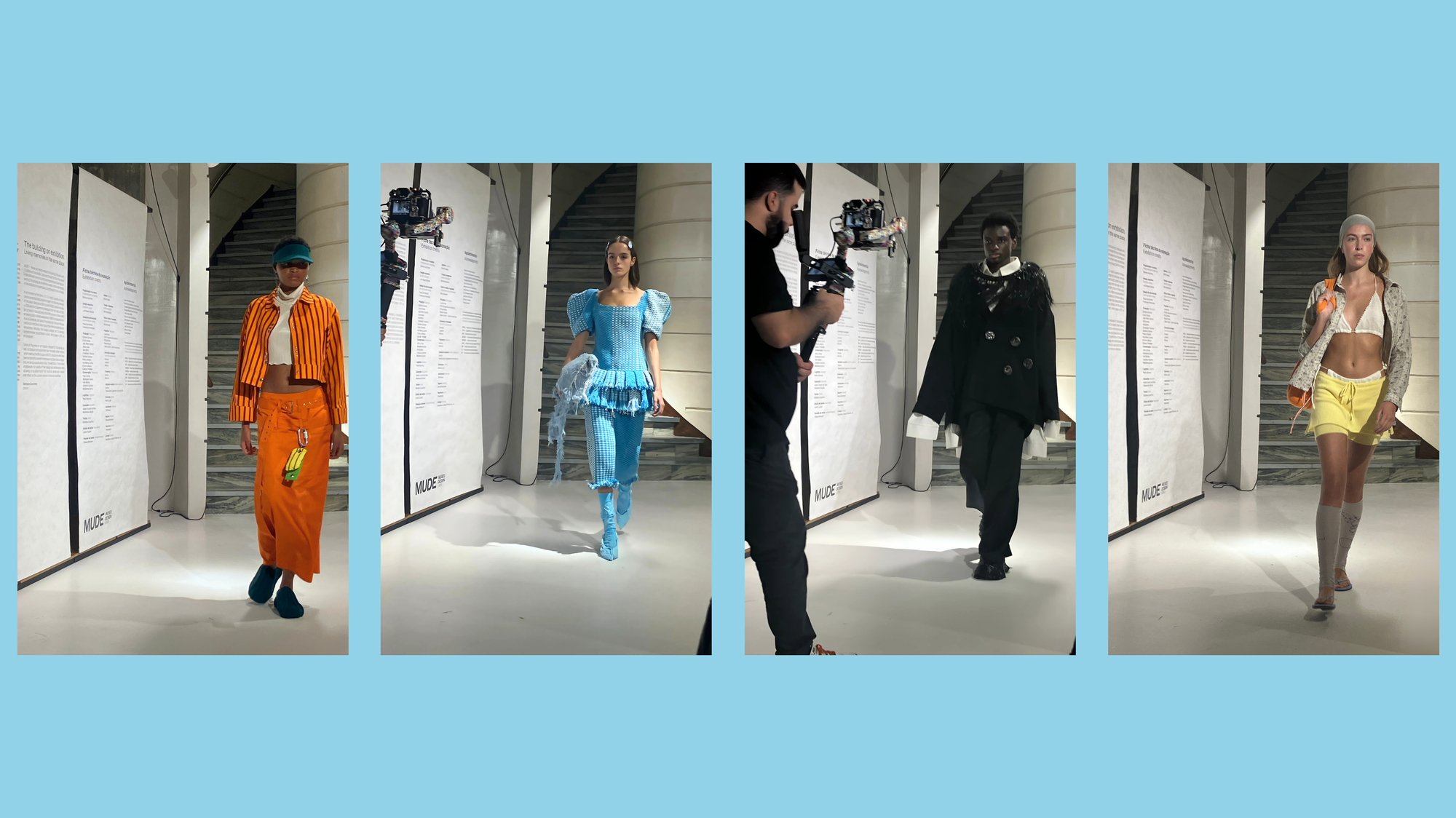
Gonçalo Barros Silva confuses us and makes us question what his inspiration was given his experience at the parade, referring us to bullfighting through the soundtrack. And that some details and silhouettes could be reinforcing this theory. But, in fact, Barros Silva’s collection is entitled “Masquerade at the Gentlemen’s Club”. With the keywords: “theatrical drama”; “whimsical charm”; “children’s book”; “surrealism”; “folk traditions”; “fluid boundaries between femininity and masculinity” and “the spirit of the 1920s cabaret”.
Through large scales, a monochromatic palette, diverse textures and the relaxed nature of the garment and the body itself, Ihanny Luquessa presents “Silence”. This is “the personification of his thoughts arising from his life experience as a black and African man”. It reflects on the three primordial moments of silence — the time we spend in the mother’s womb; meditation and death, while XXL buttons appear to personify silent screams.
Among the non-finalist competitors are: Gonçalo Oliveira; Inês Arthayett; Lolo; Play Bitter and VOID. Despite knowing how much development of a collection involves and greatly valuing the work of these designers for having made it to the Sangue Novo catwalk, when reading about their collections after watching the show, the jury's decisions become clearer, from my perspective obviously.
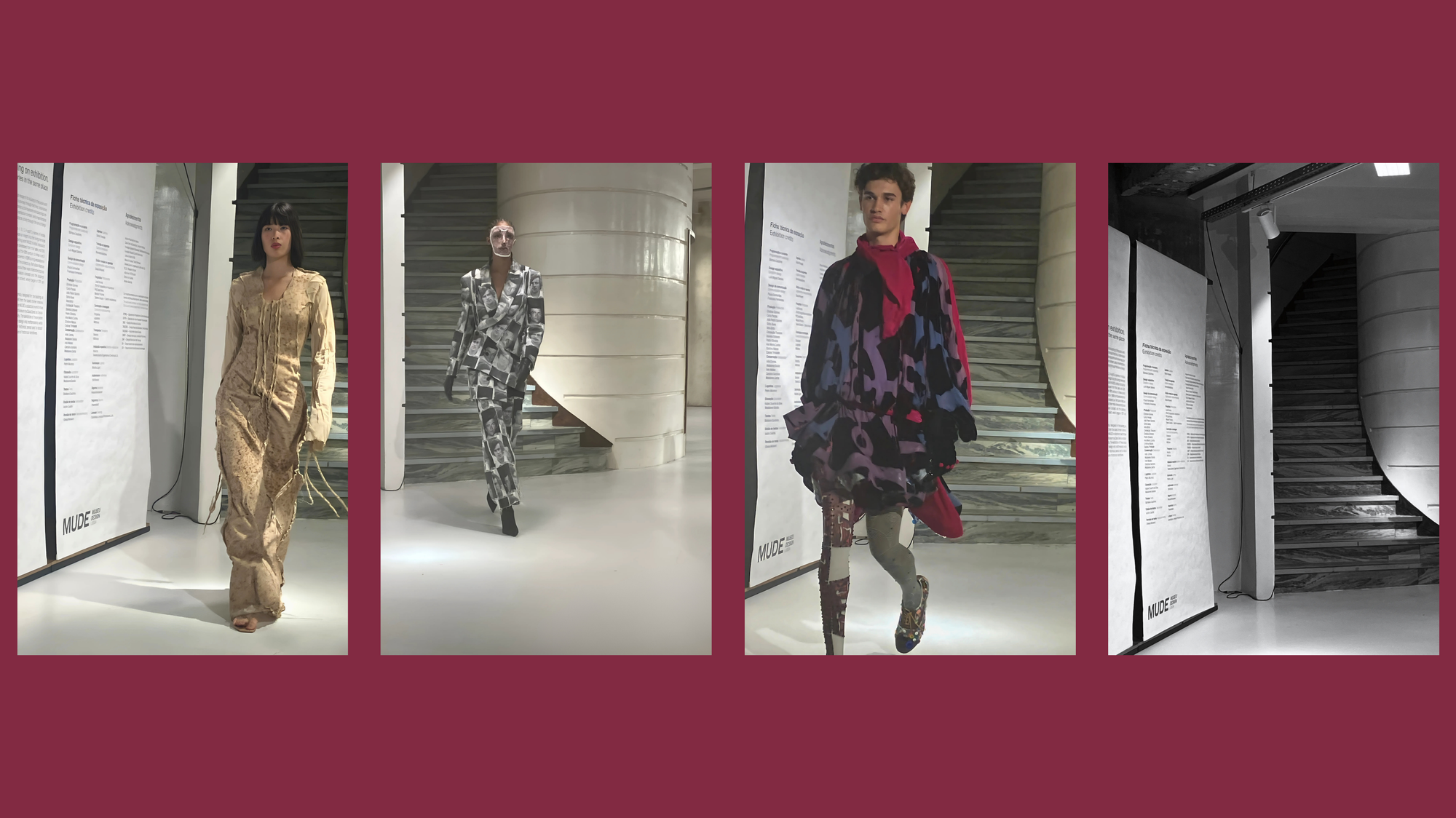
From my point of view, when I read about the collections after the shows, I hope that what I read will improve my opinion of what I saw, and here, that was not the case.
All the contestants are very talented, but selection is part of life and fashion, and for me this was the right selection. And I long for March.
Do you want to know what happened on the third and fourth days of Lisbon Fashion Week? You'll have to wait for my next letter, I promise I won't be long.
With love,
Vera Lúcia
❤️
